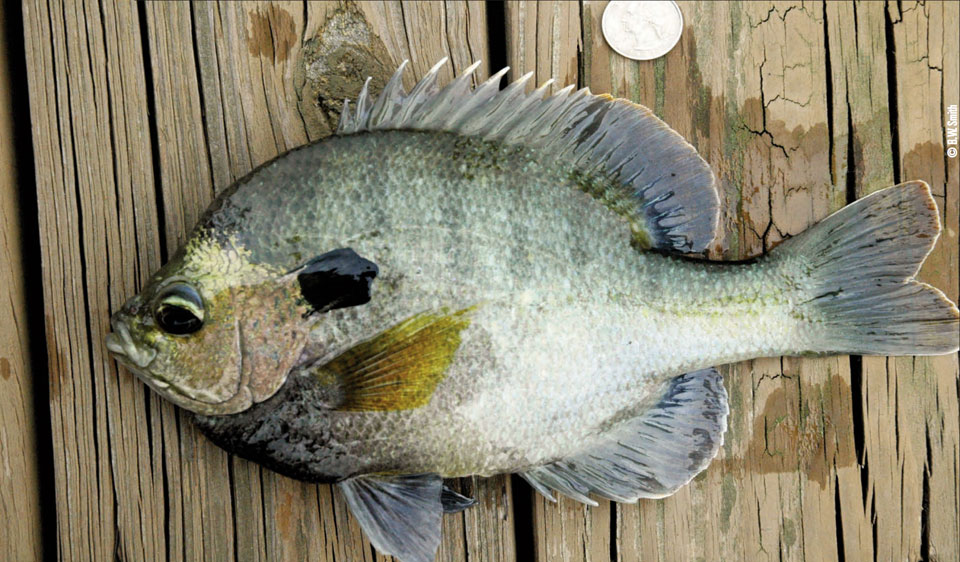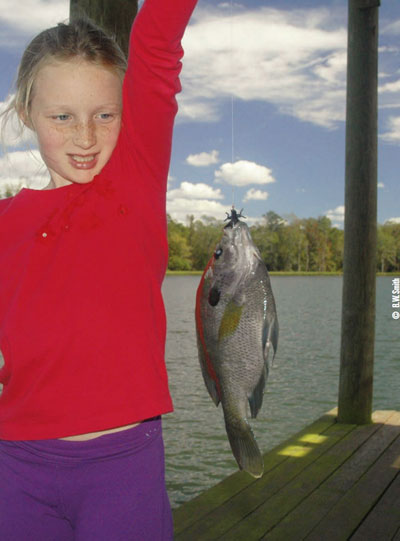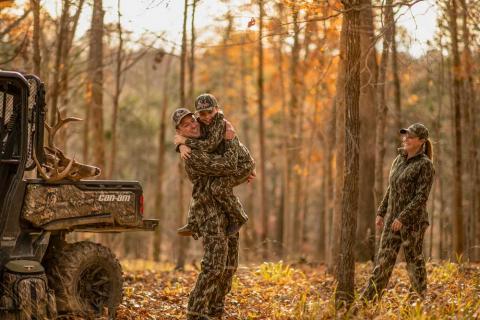Don C. Keller | Originally published in GameKeepers: Farming for Wildlife Magazine. To subscribe, click here.
The bluegill is probably the best fish available when it comes to panfish for the dinner table, producing forage for bass and an exciting light tackle angling challenge. There are several varieties of bluegill available for stocking. However, the most common are the northern bluegill (Lepomis machrochirus machrochirus) and the coppernose bluegill (L.machrochirus purpurescens). In the south, the coppernose has become the favorite due to its faster growth rate. It’s a favorite of young anglers because it's easy to get a bite and these bluegill have more fight than many fish twice their size.

Coppernose Bluegill Characteristics
The coppernose is a subspecies and not a hybrid. Its native habitat is similar to that of the Florida bass. It is found in central and southern Florida as well as a small part of southeast Georgia. Mature coppernose have a distinct copper or cream-colored bar across the nose, extending back to the gill cover. This band is particularly prominent on spawning males. They also have a thin yellow or white margin on their fins. Immature coppernose have darker and more irregular bars along their sides than the common bluegill.
Role of Coppernose Bluegill in Pond Health
These fish are well adapted to pond environments and are a critical link in the food chain. They consume zooplankton, insects, and small worms while providing high-quality food for largemouth bass. Bluegills generally school in small groups of 5 to 20 fish, although larger congregations do occur. Bluegills are sight-feeders, consuming primarily insect larvae and insects but will occasionally eat small minnows. Bluegills are opportunistic feeders and will feed whenever a meal presents itself. However, they feed primarily under low light conditions at dawn and dusk. It’s safe to say that ponds with a large number of largemouth bass also have a healthy number of bluegill.
Coppernose Bluegill Breeding
During the spring, when water temperatures reach 72-78 degrees F, males move into shallow water in search of suitable spawning habitat. Male bluegills will sweep out a nest in the pond bottom, forming a circular depression 2" to 6" deep. Clusters of these nests are found together in shallow water and are referred to as "beds." Males will typically build nests in colonies (beds) and these colonies can contain 50 or more nest. Many fishermen swear they can smell these beds when the bluegills are spawning.
Bluegills in the southern states like Florida and Texas will start spawning during the late spring and will spawn until early fall. The males greet females with a spawning display in which they rapidly and repeatedly swim circles around the nests. Females may deposit eggs in one or more nests, and often more than one female may use the same nest as the most "fit" males are usually selected by more than one female.
Females can produce up to 25,000 or more eggs, though the average is probably closer to 12,000. Egg production increases with a female’s age and size. Eggs usually hatch in two to five days. In the South, the bluegills’ five or six annual spawns provides a plentiful supply of small forage for a fishery’s largemouth bass population.
Reasons to Stock Coppernose Bluegill
 There are a couple of reasons to stock the “coppernose variety.” Studies in Florida, Texas and California have shown that the coppernose grows faster than the common bluegill. The coppernose also seems to take artificial feed better than the common bluegill. This is an advantage for the landowner who wants to grow trophy bluegills.
There are a couple of reasons to stock the “coppernose variety.” Studies in Florida, Texas and California have shown that the coppernose grows faster than the common bluegill. The coppernose also seems to take artificial feed better than the common bluegill. This is an advantage for the landowner who wants to grow trophy bluegills.
The coppernose bluegill also offers easy opportunity for the amateur angler or child fishing for the first time. Much like other sunfish we have all had fun catching, the coppernose bluegill will bite most anything. And when you catch one, you can be sure there are more there for the catching. This fish allows you to help promote family fun and educational opportunities for new outdoorsmen.
Feeding & Growing Coppernose Bluegill
Bluegills have small stomachs and prefer to eat small meals, digest this food then intake and eat again. This is best accomplished by using a quality fish feeder with a battery powered solar panel. Most pond managers will feed twice a day. A small floating-feed similar to a catfish fingerling’s food works well. As the water warms and the fish around the feeder grow larger and are more numerous, increase the amount of feed dispersed. Some pond managers will feed every four hours or six times a day. Yes, bluegill will come to the feeder at night. Feed an amount that the fish will clean up in approximately five minutes.
As the water cools in the fall, you will need to decrease the number of times you feed and the length of time the feeder runs. If you want to grow one pound plus bluegill, don't harvest all of the larger fish around the feeder. Let them get some age, preferably 2 to 3 years old. Be aware that if you have otters or “two-legged night poachers,” they will also find the feeder and can wreak havoc in a short period of time. I know of one lake owner who had two "guest" fish around his feeder and removed over 350 large bluegills in one day.
How well will they grow or how big will the coppernose get with proper management? My partner at “American Sport Fish,” Barry Smith, saw one stringer of 10 fish and the smallest was two pounds. To grow this size of fish, you will need to fertilize with a good pond fertilizer (Perfect Pond Plus), have a good bass population, use a quality fish feeder with a good feed and let the fish attain some age. The fast growing coppernose bluegill can grow much larger than the bream you are used to catching in your local pond.
Ounce for ounce, there is not a harder fighting freshwater fish in the United States than the bluegill. The coppernose bluegill is notorious for hitting as hard and fighting as long as largemouth bass twice its size. You don't have to have a $30,000 bass boat with all the electronics to have a great day with the grand kids. Grab some light tackle, crickets, worms or small jigs and make some memories catching coppernose bluegill.






























